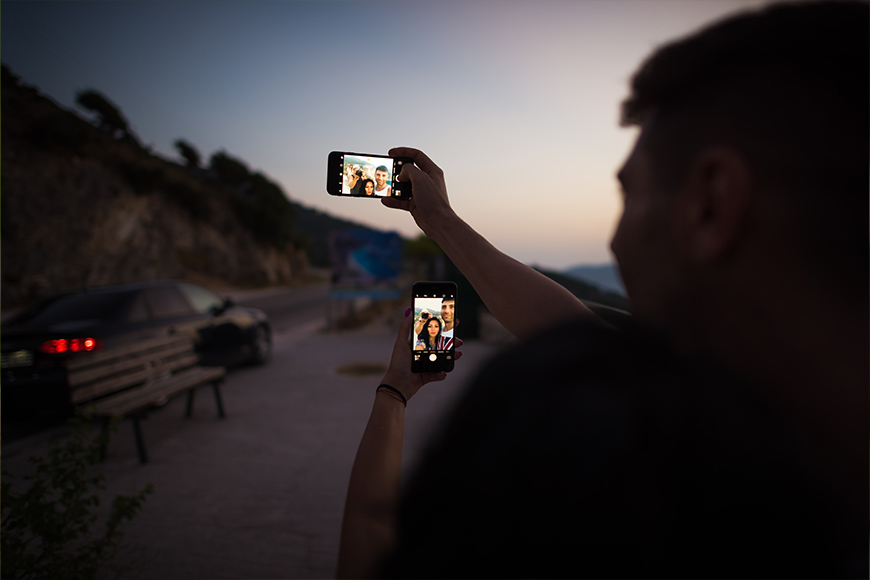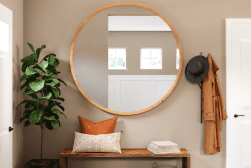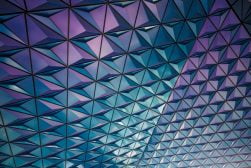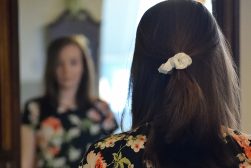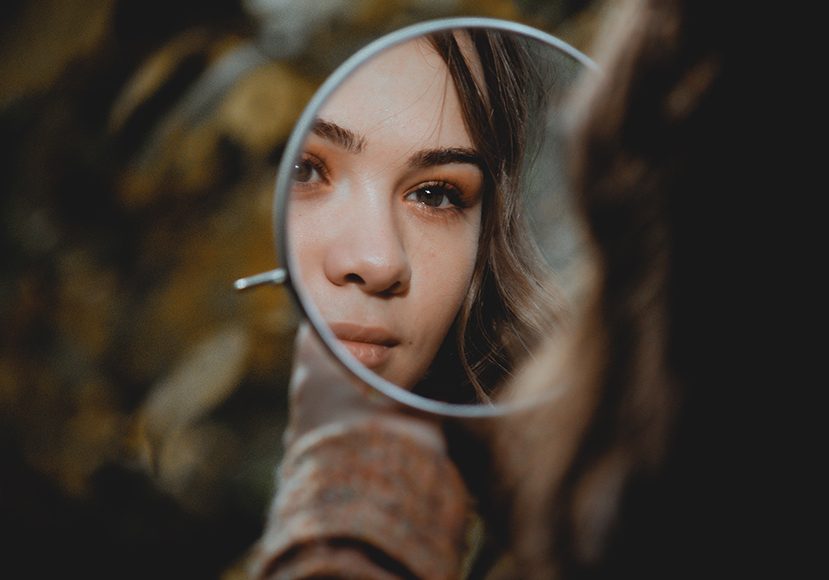
Is the Mirror or Camera More Accurate?
If you've ever seen a photo or reflection of yourself and though it wasn't an accurate representation of how you look, this article may offer some explanations.
Learn | By Stephan Jukic
The battle between mirrors and cameras in providing accurate images of ourselves is a never-ending debate.
When we look into the mirror or snap a photo, which one shows the most precise representation of our appearance?
Have you ever asked yourself: Is the mirror or camera more accurate?
This article will dive deep into the world of mirrors and cameras, exploring their accuracy in capturing our true selves.
Join me on this quest to determine which one reigns supreme: the mirror or the camera!
Summary
- Mirror images provide a more accurate perception of self due to the mere exposure effect, while camera images show how others see us.
- Selfies offer a unique perspective but can be distorted and less accurate than mirror selfies.
- To ensure accuracy when taking photos, use the back camera of your phone and experiment with lighting and angles.
- Learn how to look thinner in pictures
Understanding Mirror Images
Mirrors reflect light to create reversed images of ourselves, providing a familiar sight that we encounter daily.
This familiarity with our mirror image has a significant impact on our perception of ourselves.
(See also: Why do I look fat in pictures?)
But is this reflection a truly accurate representation of what we look like in real life?
The answer lies in how the mirror reflects light, producing an image that’s flipped horizontally.
Although we might feel more comfortable with our mirror reflection, it may not necessarily provide the most accurate image.
Using mirrors strategically in clothing stores to create an illusion of a slimmer appearance is a well-known visual merchandising technique.
Mirrors designed with slight distortions are often referred to as “skinny mirrors” because they can subtly alter a person’s reflection, making them appear slightly taller and slimmer.
A study of 86 shoppers at a lingerie store in Sweden found that people who used a dressing room with a Skinny Mirror reported greater body satisfaction than those who used a regular mirror.
More importantly, the shoppers who used a Skinny Mirror ended up purchasing more items.
88% of customers who used the Skinny Mirror made a purchase, compared to 73% of customers who used a regular mirror. the study found. Overall, the Skinny Mirror group contributed to 54% of total sales.
The purpose of these mirrors is to enhance customer satisfaction and boost their self-confidence when trying on clothes.
Flat Mirrors vs. Curved Mirrors
When discussing mirror images, it’s essential to differentiate between flat mirrors and curved mirrors.
Flat mirrors give us horizontally flipped images, while curved mirrors, either convex or concave, can make our image appear bigger or smaller, respectively.
The surface of a mirror can be slightly curved. This might lead to slight distortions in an image reflected in the mirror.
Some phone cameras even enable you to imitate the effects of curved mirrors, reflecting light in a specific way to produce various image distortions.
How Much Do You REALLY Know About Photography?! 🤔
Test your photography knowledge with this quick quiz!
See how much you really know about photography...

However, for the sake of this comparison, we’ll focus on flat mirrors, as they are the most commonly used for self-reflection.
Analyzing Camera Images
Unlike mirrors, cameras capture images using their lenses to focus light rays onto a camera sensor, processing them into a digital image.
Cameras take into account different perspectives, lighting conditions, and other factors that can affect the accuracy of the final image.
However, producing an accurate depiction of the subject’s facial features can be challenging due to various settings and factors.
A camera’s lens, sensor, and settings can cause distortions, such as the “half moon” effect where shadows cover half of the face, making ears look bigger and creating a double chin illusion.
Achieving an accurate camera image relies on considering these factors and adjusting them accordingly for an accurate interpretation of such accurate images.
Camera Settings and Distortions
Camera settings like ISO, aperture, and shutter speed can lead to distortions in photos, making it challenging to produce accurate images.
In addition, front and back cameras differ in terms of resolution and lens quality.
Generally, front cameras have a higher resolution and better lens quality than back cameras, which can affect the accuracy of a mirror or photo image.
To avoid distortions in photos, try stepping back from the camera and considering the focal length.
Adjusting the focal length can even change the width of your head, affecting the accurate image of the subject.
Front Camera vs. Back Camera
The main difference between front and back cameras on mobile phones is their intended use.
The front camera is designed for selfies and video calls, while the back camera captures photos and videos of the surrounding environment.
However, when it comes to accuracy, the back camera takes the lead.
The back camera is far superior in capturing details, while the front camera is primarily designed for selfies, often resulting in lower-resolution images. This difference in resolution and lens quality affects the overall accuracy of the camera image.
In addition, with phones with multiple cameras (like the 3-camera iPhones), one of the front cameras has a wide-angle field of view, which can distort a subject’s appearance.
Comparing Mirror and Camera Accuracy
When comparing mirror and camera images, we find that mirror images are more accurate for self-perception due to the mere exposure effect.
We are used to seeing our own mirror image, making us feel more at ease and perceive it as more attractive.
On the other hand, camera images provide a more accurate representation of how others perceive us, as they capture non-mirrored images affected by environmental factors.
Familiarity plays a significant role in our perception of attractiveness, with the mere exposure effect showing that we tend to like something more the more we’re exposed to it.
This familiarity makes us prefer our mirror image over the camera image.
Familiarity and Perception
The mere exposure effect and the familiarity effect influence our preference for mirror images.
These principles show that we feel more comfortable with familiar images, such as our mirror reflection, making us more likely to prefer them over camera images.
Our familiarity with our mirror image affects our perception of attractiveness.
The more we are exposed to our mirror reflection, the more we find it appealing, leading to a preference for mirror images over camera images.
How Others See Us
Camera images provide a more accurate representation of how others perceive us because they capture what other people would see.
These images are affected by environmental factors, such as lighting and angles, that influence the quality of the photo the camera captures.
Smartphone cameras can often have a lower resolution, which can change our features and make us look different from what we see in the mirror.
This difference in quality and resolution is something to consider when analyzing the accuracy of camera images.
When they say
“The camera adds 10 pounds”
they’re not kidding.
Here’s the effect with different camera lenses: pic.twitter.com/xmwbsflVKd— Jim Zub (@JimZub) July 26, 2016
Pose and Candidness
In everyday life, we are often aware of how we present ourselves and may consciously or unconsciously adopt certain poses or facial expressions that we find flattering or comfortable.
However, in candid or spontaneous photos, we may be caught off guard, capturing a more unfiltered or natural version of ourselves that we are not accustomed to seeing.
Context and Timing
Photos freeze a moment in time, capturing us in specific situations, lighting conditions, and environments.
These factors can significantly impact our appearance and may contribute to the surprise factor when seeing a photo.
For example, harsh lighting, unflattering angles, or unfamiliar surroundings can alter our perception of how we look.
Selfies: A Unique Perspective of Ourselves
Selfies offer a unique perspective on our appearance, allowing us to capture images of ourselves in various environments and situations.
However, selfies can be distorted due to angles, filters, and camera quality, leading to less accurate representations of our true selves.
Mirror selfies, taken using the back camera of our smartphones, can provide a more accurate representation of our appearance than traditional selfies.
However, even though mirror selfies are accurate, they can still be affected by the same distortions and factors that impact camera images.
Tips for More Accurate Selfies
To achieve more accurate selfies, consider using the back camera of your smartphone, which usually offers higher resolution and better lens quality.
Maintain a proper distance from the camera, as holding your phone too close can result in distorted images.
Consider lighting and angles when taking selfies. Natural or outdoor lighting is more flattering than harsh camera flashes, and experimenting with different angles can help you find the most accurate depiction of your appearance.
Improving Photo Accuracy
Improving photo accuracy can be achieved through editing and post-processing, adjusting camera settings, and considering factors like lighting and angles.
By taking these steps, you can create more accurate images that truly represent your appearance.
Whether using a mirror-accurate representation or an accurate mirror or photo to capture your image, it’s essential to keep these factors in mind to ensure the most accurate representation possible.
Editing and Post-Processing
Editing and post-processing can significantly improve the accuracy of your photos.
Techniques such as adjusting white balance, exposure, brightness, contrast, and color balance can help create more accurate images.
Shooting your pictures in RAW format provides the best color adjustment in post-production editing, further enhancing the accuracy of your photos.
Lens distortion fixing tools may also be used to help with the distortion created by using wide-angle lenses.
By taking the time to edit and process your images, you can achieve a more precise representation of your appearance.
Final Words
Throughout this article, we’ve explored the worlds of mirrors and cameras in search of the most accurate representation of our appearance.
We’ve discovered that while mirror images are more accurate for self-perception, camera images provide a better representation of how others perceive us.
It might not be a question of: is the mirror or camera more accurate, but rather, is our perceived image of ourselves different to how we actually look?
Ultimately, the key to obtaining accurate images lies in understanding the factors that affect both mirrors and cameras, such as lighting, angles, and camera settings.
By considering these elements and employing editing techniques, you can ensure that your images are a true reflection of your appearance, whether captured in the mirror or through the lens of a camera.
Is the Mirror or Camera More Accurate: FAQs
- How can I see my true image?
Try using two hand mirrors placed at right angles to create an accurate reflection of what you look like. Adjust the angle between the mirrors until you get a full image of your face, then wink with your right eye and see if the person in the mirror does the same.
By following this advice, you can get an accurate view of your true image.
- Is a mirror how others see you?
No, a mirror is not how others see you. While it may provide a general representation of your appearance, it does not accurately depict how you appear in person, since the reflection in a mirror is reversed.
The way others perceive you is based on their own individual experiences and interactions with you. They may take into account your physical appearance, but they may not take into account your physical appearance.
- Should I trust my mirror or camera more?
Overall, you should trust your mirror more than your camera. Cameras can change the lighting to appear differently, while a mirror only reflects what is there in natural light.
A camera may make you look better for the moment, but it won’t accurately represent you.
- Why am I better looking in the mirror than on camera?
It’s because when we look in the mirror, our image is reversed and can appear more pleasing to us. However, photographs don’t reverse our image, so we may be more critical of ourselves when we see the actual version of ourselves. This can lead us to think we look worse on camera than in the mirror.
- Are mirror images more accurate for self-perception or camera images?
It appears that self-perception is more accurately conveyed through mirror images since cameras tend to alter our perspective. This is largely due to the mere exposure effect, which means we become more comfortable with familiar visuals.
The mere exposure effect is a psychological phenomenon that states that people tend to develop a preference for things merely because they are familiar with them. This is why we often prefer the images we see in the mirror.

Check out these 8 essential tools to help you succeed as a professional photographer.
Includes limited-time discounts.







